I just got back from a self-guided New Mexico mule deer hunt on public land where I tagged a nice 5×4 buck. Here’s the story of how it all happened.
Earlier this year I received some great news when I found out I drew a limited entry rifle season mule deer tag for a really good unit in New Mexico. While the state is not known for producing monster bucks, there is still some excellent hunting for desert mule deer there and I was very excited for hunting season to open so I could take a crack at harvesting my first mule deer. Here’s how my self-guided New Mexico mule deer hunt went this year.
If you’ve read any of my older articles, you know that I did quite a bit of whitetail hunting where I grew up in east Texas and that I took a small blacktail buck on a really physically demanding and miserable hunt in western Washington several years ago. Even though there was some pretty good mule deer hunting in eastern Washington, the bucks there always seemed to be one step ahead of me and I moved away from Washington this summer still looking to harvest my first mule deer. However, I had a good feeling that would all change after I drew that tag and started planning my New Mexico mule deer hunt.
New Mexico Mule Deer Hunt: Getting Ready
The terrain in this unit is very different from what I was used to in east Texas and western Washington. Instead of dense forests that limited visibility to less than 100 yards in most places, I’d be hunting relatively rugged hills and canyons sparsely covered with cactus, grass, juniper, yucca, and pinyon pine that permitted visibility out past 1,000 yards in come cases.
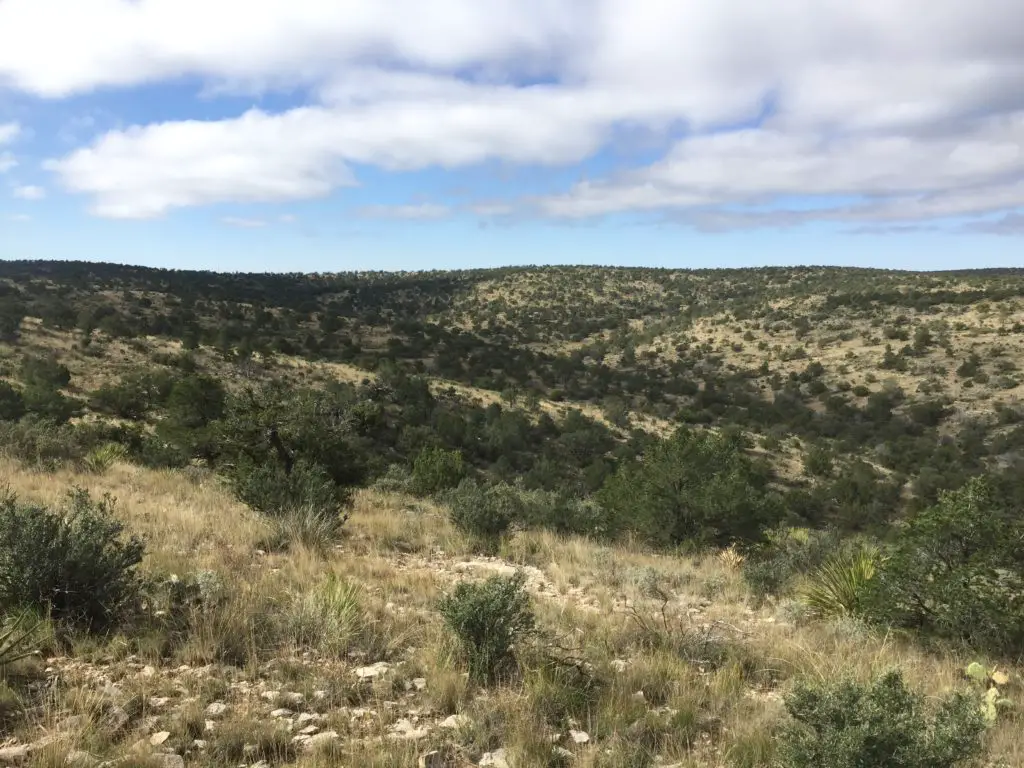
With that in mind, I knew I’d need to adapt both my hunting style and gear to these conditions if I were to be successful. So, as much as I love the 9.3x62mm Mauser, I decided to go with a flatter shooting cartridge on this hunt and brought my Ruger Hawkeye FTW Hunter chambered in .300 Winchester Magnum instead. I also carried my Leupold RX-850i laser rangefinder with me at all times. Since mule deer aren’t particularly large or tough animals, and since I knew I might have to take a longer range shot than usual, I opted for a lightweight bullet and used 165gr Barnes TTSX BT bullets (provided courtesy of Ammunition To Go).
That part of New Mexico is textbook glassing country and I planned on spending quite a bit of time behind my optics. I brought my Leupold Cascades BX-2 8x42mm binoculars and my Leupold SX-1 Ventana 15-45x60mm spotting scope. Those are both good quality pieces of glass, but I wanted something better suited for glassing mule deer in such wide open country. Fortunately, the folks at Ochocos were kind enough to loan me a set of Leupold BX-5 Santiam HD 15x56mm binoculars. It didn’t take me long at all to realize those binoculars were absolutely perfect for that sort of work when I mounted them on a tripod.
I spent the months leading up to my New Mexico mule deer hunt doing a lot of general research on the area and conducting some “E-Scouting” using Google Earth. These efforts paid off in a big way and helped me identify several specific areas where I planned on doing some more detailed scouting in person right before the season started. It didn’t take me long to cross off a couple of areas once I arrived and saw conditions on the ground with my own eyes.
However, one canyon in particular looked even better in person than it did on Google Earth. It had plenty of food, lots of cover, wasn’t super easy for hunters to access, and (most importantly) contained a good source of water. Within a few minutes of walking around, I found lots of fresh deer tracks and scat that convinced me that there were plenty of deer in the area. Excited at the prospects the canyon held, I decided to find a good vantage point and try to glass up any deer moving around that evening.
I set up my Santiam binoculars right after I arrived that afternoon and started meticulously glassing the opposite side of the canyon. I picked out a group of javelina feeding on some prickly pear cactus a little over 400 yards away after about an hour. But as darkness approached, I had yet to see any deer. Then to my amazement, two bucks suddenly materialized out of the bushes about 350 yards away. I must have glassed over that spot a half dozen times since I sat down and, though I’m sure they were just bedded behind a bush that hid them until they stood up, it felt as though they appeared out of thin air.
The larger of the two bucks was a big bodied, heavy racked 6×7 that was quite possibly the largest buck I’ve ever seen in person. He was accompanied by a small 4×4. I observed those bucks for nearly an hour as they fed across the opposite side of the canyon and eventually lost sight of them as darkness fell.
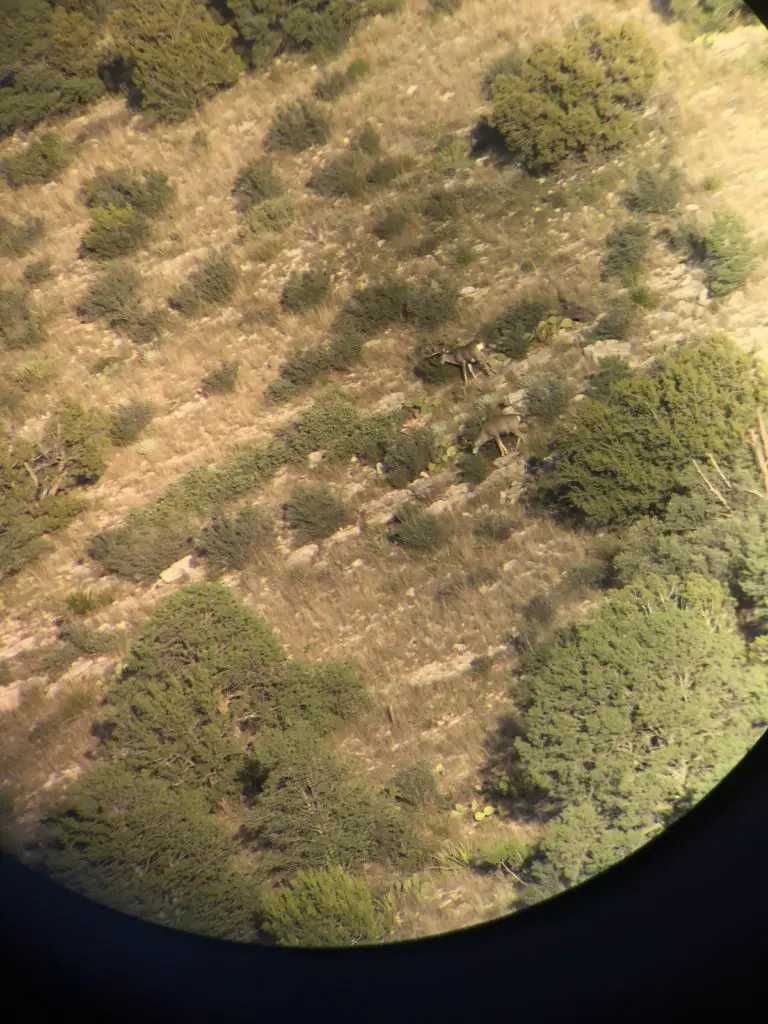
New Mexico Mule Deer Hunt: The Season Opens
I went to bed that night confident I would get a shot at that monster 6×7 the next afternoon after deer season opened. Unfortunately, it didn’t work out that way and I didn’t see a single deer on the opening day of deer season. The wind changed on the second day of the season, which prevented me from sitting at that same spot again and I decided to do some glassing from the far end of the canyon and see what else I could spot.
My spirits lifted quite a bit that next morning when I saw several does and a 4×4 buck at that end of the canyon shortly after the sun rose. Then I got an even more welcome sight when I saw two bucks on the opposite side of the ridge I saw the 6×7 and 4×4 on the evening before the season opened. While they were too far away (over 1,000 yards) for me to positively identify with my Santiam binoculars, one of those bucks was clearly really big. That, plus the fact that I saw them so close to where I spotted the original two bucks, convinced me they were the same two deer.
Armed with that knowledge, I went back to that end of the canyon that evening. I saw the javelina again, but the deer declined to cooperate. In an effort to change things up a bit, I moved to a different glassing location the next morning above and behind the ridge where I’d been seeing those bucks.
I had a spectacular view of the canyon when the sun rose. A doe appeared with her fawn shortly after daylight and fed nonchalantly down the ridge in front of me. They bedded less than 200 yards away from me and I watched them nap on and off for over an hour before they slowly moved over the other side of the ridge.
Unfortunately, those were the only deer I saw that morning. To make the situation even more frustrating, I realized what a great spot those bucks had found. Between studying maps of those ridges and meticulously picking them apart with my binoculars, I had developed a pretty complete picture of those ridges over the previous couple of days.
There was too much vegetation up high on the ridges to spot any bedded deer from above without approaching to within 50 yards of their beds. At the same time, the prevailing winds in the area prevented any approach from below on most days. As they say, deer don’t get big by being stupid. This old buck had obviously found a spot where he was very safe from predators.
New Mexico Mule Deer Hunt: It All Comes Together
With the end of deer season only a few days away, I decided to try a different approach the next morning. While I’d spent lots of time hunting the extreme ends of the canyon, I had not hunted the middle of it at all. There were plenty of draws and other folds in the terrain that provided lots of places for deer to hide. If nothing else, I figured moving down the canyon would give me something different to look at.
Dawn the next morning came with a bitter wind out of the northeast. Shortly after the sun rose I noticed a group of 8 does and fawns about 700 yards away feeding directly into the wind and moving up over the far crest of the canyon. I consulted my map and saw that they were heading to another, smaller canyon on the other side of that ridge.
Knowing that my New Mexico mule deer hunt was nearing an end one way or another, I figured I had nothing to lose by following them. Hopefully, there would be a buck or two in that other canyon for the same reasons the does were heading there.
Those does did not look alarmed or spooked. However, I did not want to follow directly behind them in case one was watching their back trail. For this reason, I opted to move around the far end of the ridge and enter the new canyon from a slightly different direction.
Luckily, the wind did not change and I slipped into the smaller canyon unnoticed. I immediately picked out two does feeding on the other side of the canyon with my naked eye. I slowly brought my BX-2 Cascades binoculars up from my chest rig and spotted a third one within seconds.
After confirming the presence of deer in the canyon, I decided to set up for a more thorough search. Using a few bushes to cover my movement, I half crawled/half duck walked a dozen yards to a pine tree. I sat down behind it, removed my backpack, and started glassing the other side of the canyon with my BX-5 Santiam binoculars.
I did not immediately notice any other deer, but I did see a couple of javelina moving at the far end of the canyon. This gave me even more confidence that this canyon held some serious potential.
The temperature steadily climbed as the sun rose higher into the sky and the day that started off cold and windy started to warm up. Within a few minutes, all three does disappeared as they bedded down for the morning. Figuring that I wouldn’t likely see much more movement for several hours, I decided to settle in for the long haul and spend the rest of the afternoon glassing that canyon.
Something caught my eye as I meticulously picked apart the other side of the canyon with my binoculars near where I’d last seen the does. I zeroed in on the tangle of branches containing the source of the movement. As I focused in on that spot, I saw something move again.
Once my mind realized what I was looking at, a deer head with antlers attached to it suddenly materialized behind a brush pile. I realized I was looking at a buck that had been bedded there the whole time!
Seeing that his antlers forked, I confirmed he was a legal buck. I couldn’t believe my eyes at first. However, the reality of the situation quickly sunk in and I forced myself to remain calm.
Ever so slowly, I put on my hearing protection (a .300 Win Mag with a muzzle brake is LOUD). Then I carefully raised my rangefinder and checked the distance to the buck: 227 yards. Perfect, I zeroed my rifle at 220 yards and got plenty of practice at longer ranges. Now I just need to make this shot.
When I closely examined my surroundings to plan out my shot I noticed a problem though: the vegetation between us prevented the use of the prone shooting position. As you can see in the photo below (the arrow points to the buck’s location), I needed to shoot from a sitting position.
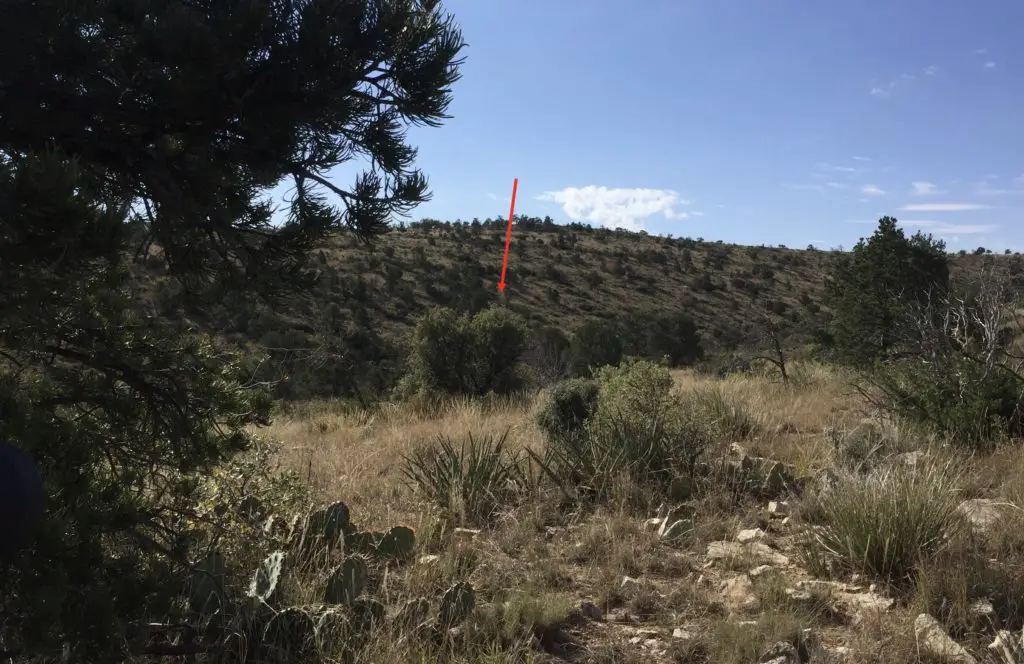
For that reason, I decided to use my backpack as a rest for my rifle. Though I moved the pack as carefully as possible, the process wasn’t as smooth as I planned and I bumped the tree branches above my head with my rifle barrel.
As I got my rifle ready, I pondered the next problem I had to deal with before shooting: how long would I have to wait for that buck to stand up and give me a good shot? As it turns out, that problem took care of itself.
The buck either saw or heard something that made him suspicious. When I got my rifle set on the backpack and looked through the scope, he was standing up and looking directly at me. Fortunately, he was standing broadside and I was ready to shoot. I flipped the safety off, placed the crosshairs behind his shoulder, exhaled, and squeezed the trigger.
The hill behind him exploded with dust and the buck disappeared from view. I cycled the bolt and slowly scanned the area with my scope, but couldn’t find the deer. What happened?!?! Did I miss?!?!
After a few seconds, I noticed part of an antler peeking out at ground level from behind the brush pile that originally concealed his bed. When it didn’t move after I watched it for a dozen seconds or so, I switched back over to the Santiam binoculars. With them, I quickly confirmed that I had indeed hit the deer and he dropped stone dead back down into his bed.
After packing up all my gear, I made my way across the canyon to the buck. At that point, the easy part ended and the real work on my New Mexico mule deer hunt began. I skinned and quartered him on the side of that canyon then packed all the meat over 2 miles back to where I parked that morning.
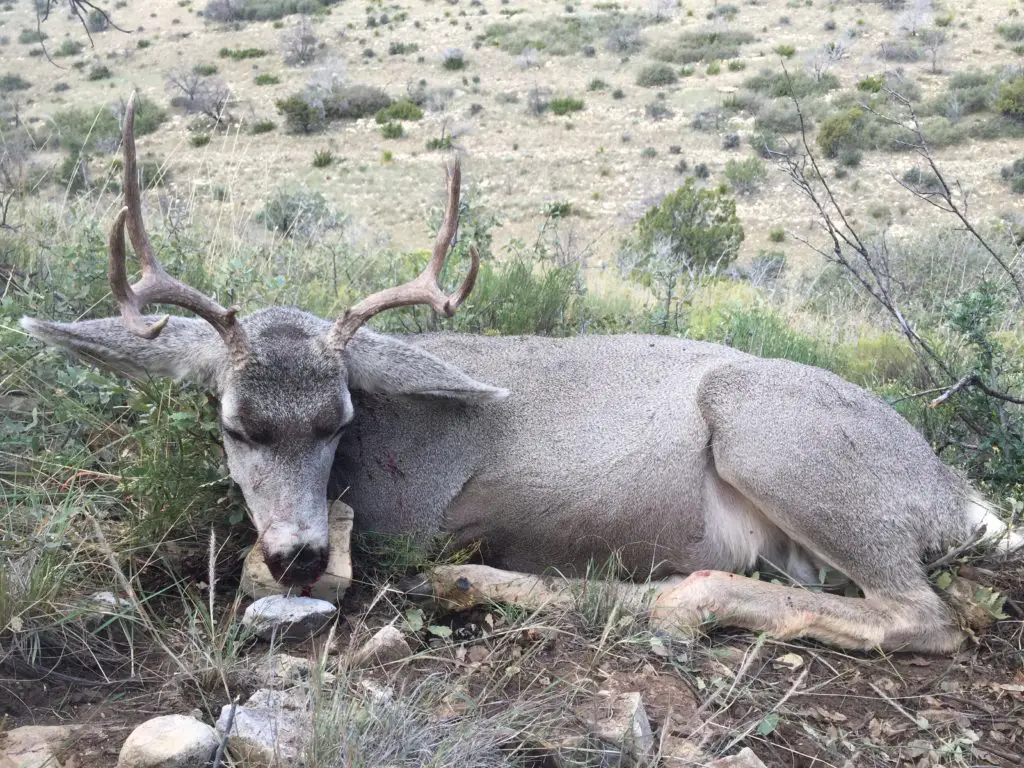
Even with all the effort involved I still felt great: I just shot my first mule deer on a self-guided hunt on public land. I worked hard, put in the miles, made a good plan, and got a little lucky. It was an incredible adventure and I wouldn’t have wanted my New Mexico mule deer hunt to have gone any other way.
Enjoy this article about my self-guided New Mexico mule deer hunt on public land? Please share it with your friends on Facebook and Twitter.
Make sure you follow The Big Game Hunting Blog on Facebook, Instagram, Twitter, and YouTube.
NEXT: BEST GIFTS FOR HUNTERS
NEXT: BEST HUNTING EAR PROTECTION FOR SPORTSMEN IN 2021
John McAdams is a proficient blogger, experienced shooter, and long time hunter who has pursued big game in 8 different countries on 3 separate continents. John graduated from the United States Military Academy at West Point and is a veteran of combat tours with the US Army in Iraq & Afghanistan. In addition to founding and writing for The Big Game Hunting Blog, John has written for outdoor publications like Bear Hunting Magazine, The Texas State Rifle Association newsletter, Texas Wildlife Magazine, & Wide Open Spaces. Learn more about John here, read some of John’s most popular articles, and be sure to subscribe to his show: the Big Game Hunting Podcast.

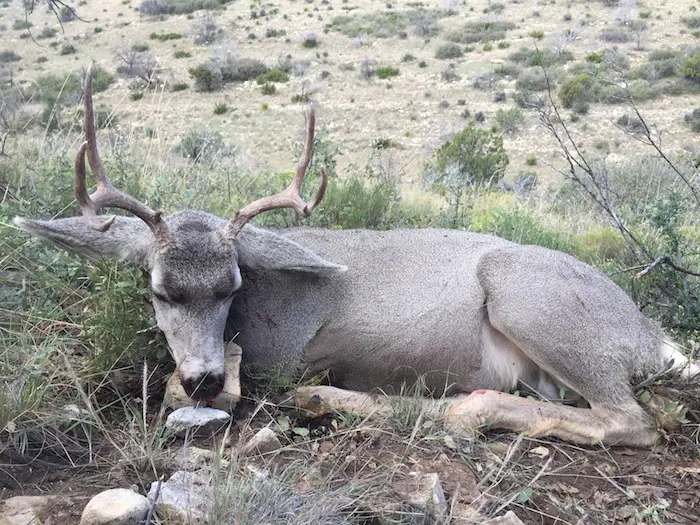
Great story. Wish I knew which unit you hunted in.
Looks like a great hunt!
Very nice article… I put in for deer this year ( in NM) but didn’t get drawn I have a friend in NM and it’s hard for him
To get drawn !!!
I am an elderly New Zealand hunter who has hunted fallow deer all my adult life. Every herd in N.Z. without exception. Both North & South islands. Shot one top class trophy and then started using a camera. Thank you for the interesting story.